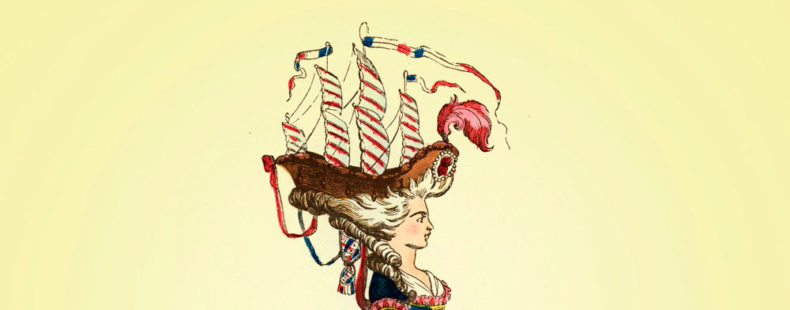Fantastic follicles
In the early ‘90s, the best show on TV was Reading Rainbow. It once featured a book called The Lady with the Ship on Her Head. A ship like Captain Hook’s on top of a woman’s head? No way! But, it’s actually based on truth. And, as we all know, truth is stranger than fiction. Especially, when it comes to wacky hair in the 1700s.
During that time in France, the trendiest way to flash wealth was on your head. Elaborate wigs and ridiculous hairstyles were the gold-plated iPhones of the day—they boasted riches, status, and insane gaudiness. The hair trends went by special names so all the rich people could gossip about who wore their follicles the best.
And, the names for the following hairstyles are beyond ridiculous.























